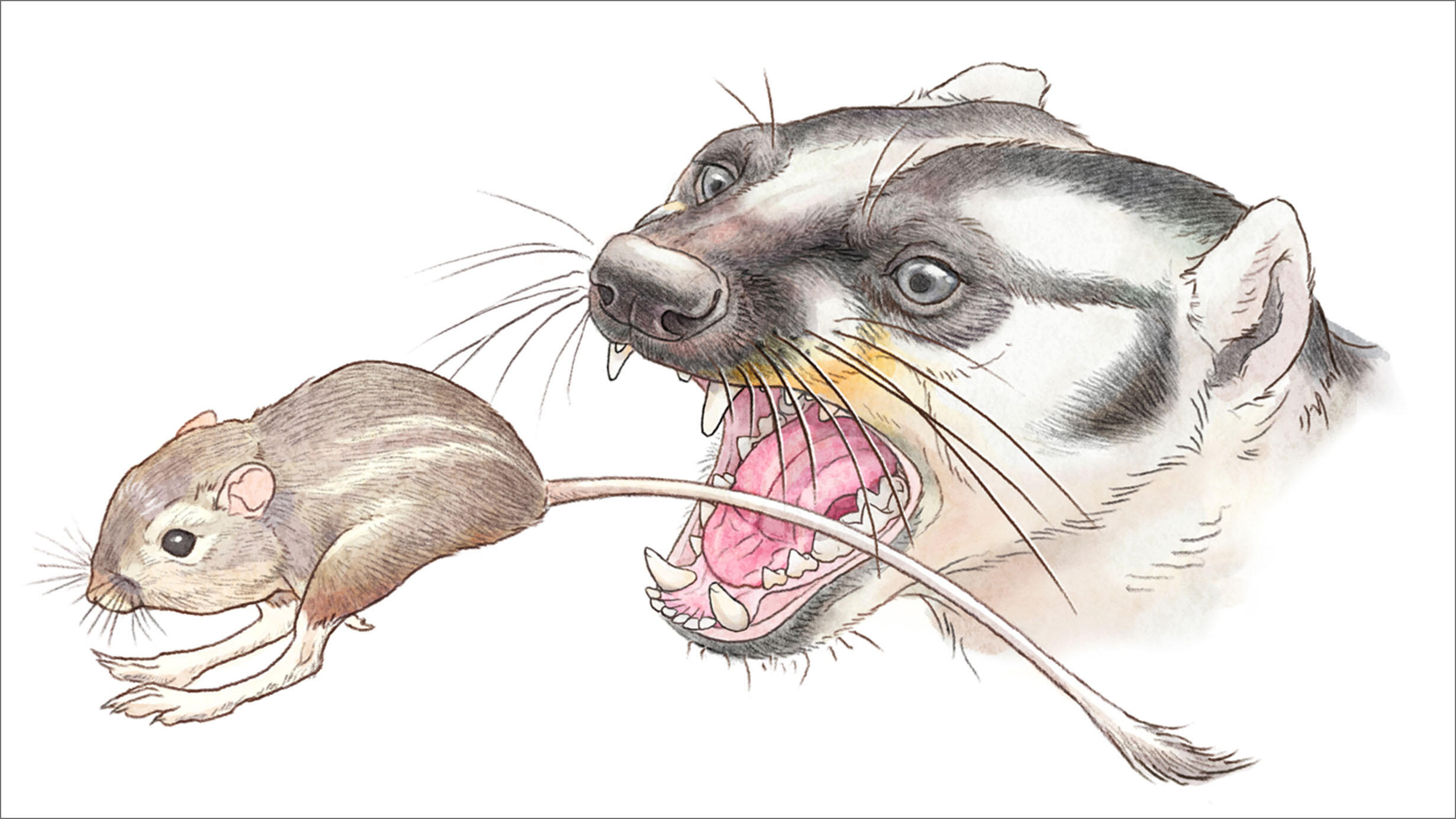New Study Finds Extinct Weasel Relative’s Skull Resembled American Badger’s
by AMNH on
 Leptarctus primus, an extinct weasel relative that lived in North America and Asia about 20 million years ago, had an unusual skull shape that functioned similarly to that of the American badger.
Leptarctus primus, an extinct weasel relative that lived in North America and Asia about 20 million years ago, had an unusual skull shape that functioned similarly to that of the American badger. N. Wong/© AMNH
The shape of an animal’s skull can offer clues about what it ate, about its close relatives, and even about its habitat millions of years ago.
But some skulls have puzzled scientists for years. The oddly shaped skull of Leptarctus primus, an extinct weasel relative that lived in North America and Asia about 20 million years ago, had led to conflicting theories about its diet.
© J. Tseng et al
“For a mammal, its skull is really strange,” said Z. Jack Tseng, a research associate at the Museum and co-author of a new study published this week in the Journal of Vertebrate Paleontology that focuses on what Leptarcus might have eaten. “It’s heavily built—like a tank—with very thick zygomatic cheek bones. The top of its head looks like it’s wearing a helmet.”
The study, led by Alixandra Prybyla, a Columbia University student conducting research as part of the Museum’s National Science Foundation Summer Research Experience for Undergraduates (REU), compared a nearly complete fossil skull of Leptarctus with 18 species of modern carnivorans and other fossil species using bite simulations based on CT scans of skulls and virtual modeling of feeding mechanics.
Results showed that the skull of Leptarctus was most similar to that of the American badger. Most likely, the extinct weasel had a similar diet, too: a carnivorous predator that could also be omnivorous when prey was scarce.
“This complete skull of Leptarctus represents an untapped wellspring of information on the history of ancient relatives of weasels, otters, badgers, and skunks. It’s wonderful what one specimen can illuminate for researchers,” says Prybyla.
Read more about the factors that can influence skull shape.
The research group plans to continue to use similar tools to analyze variations in skull feeding mechanics among other species in the leptarcine group to identify the range of feeding adaptations among this group of extinct predators.
“High-resolution x-ray CT images and sophisticated computerized engineering modeling tools have completely transformed our ability to accurately reconstruct feeding habits in extinct animals,” says John Flynn, Frick curator of fossil mammals in the Museum’s Division of Paleontology who is co-author and research team leader on the study.